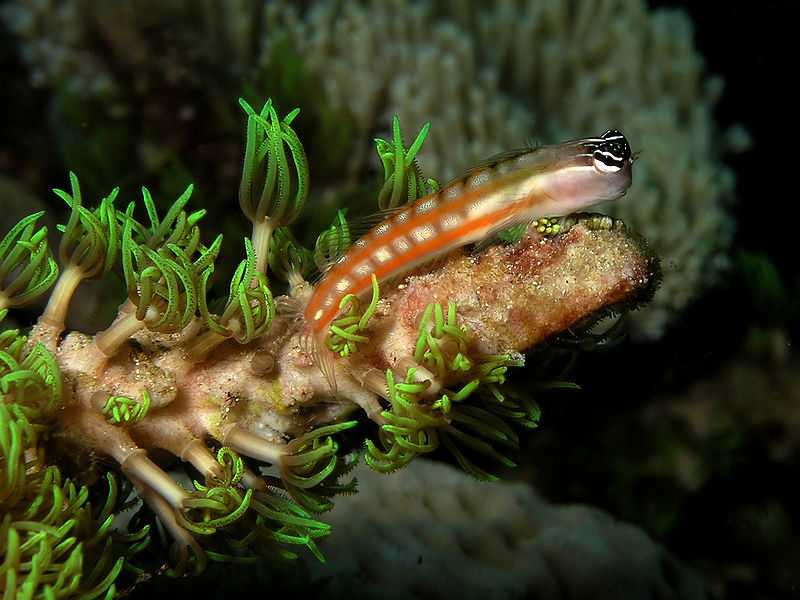 Australian blenny fish in East Timor.
Nick Hobgood/ Wikimedia Commons.
Australian blenny fish in East Timor.
Nick Hobgood/ Wikimedia Commons. Through wearables, bearables, and the Internet of Things, my neighbor with diabetes is eating healthier and losing weight; he is likely to extend his life. Yet, technology usage can lead to an over-reliance and excessive dependency on electronic devices. Detrimental effects are a concern as a person endures ongoing cognitive reflections with tracking, followed by recurrent loops of messages posted and seen. Regrettably, usage as such could be at the expense of the more important aspects of life.
Society has become increasingly fatigued, both physically and cognitively.
Self-imposed sleep deprivation is identified as a primary reason, as people “skimp on sleep in hopes of getting more done, and widespread access to technology makes it possible to stay busy round the clock.” It is no wonder we long for resource-conserving mechanisms. However droll, we often find solutions through the very devices with which we stayed busy 24-7.
Enter the cyberneticist, who might ask us to gain insight by peering through the lens of biology. In the spirit of ethology, let’s dive into the sea to watch a small fish performing dance-like movements so as to clean the teeth of a large grouper. The large grouper, which would’ve otherwise devoured the small fish, has been lulled into a trance through the artful dance of the small fish. Although the large grouper seems vulnerable in this dazed state, a mutually beneficial relationship is in action as the small fish is safely enjoying nourishment while the large grouper derives dental benefits through the removal of parasites and fungi. Ethologists tell us a “behavior pattern” has been activated; the stimulus of one (the dance) has triggered an instinctive behavior in another (the trance). Under instinctive behavior, the large grouper can better survive, receiving and conserving valuable resources.
Serious danger arises, however, when the Saber-toothed Blenny arrives on the scene with its code-breaking abilities. This impostor, also known as the false cleanerfish, has learned to mimic the stimulus (the dance) of the small fish to trigger the instinctive behavior (trance) of the large grouper. The duped large grouper becomes vulnerable to this insidious imitator; the false cleanerfish is at liberty to tear away portions of the mouth or fin of the large grouper. Fortunately, as the large groupers mature, the species learns to avoid being duped by astutely discriminating key attributes of the imposter.
Our maritime analogy brings considerations to the surface. Perhaps Luddites perceive mostly the Saber-toothed blenny in the sea of technology; they may recommend that we obstruct or halt technology. Yet, technologies that are akin to the small fish cleaners can wonderfully enhance our existence. There will always be the Saber-toothed Blenny; and we cannot control the sea. Perhaps the answer is less about trying to control the external domain, and more about developing–and teaching others to develop–the internal domain. With a healthy balance of physical, emotional, mental, and spiritual capacities, we are likely to mature to wisely discern the false, to develop robust safeguards, and all the while enjoy the wonderful benefits of technology.
Authors

Christina Perakslis






 JOIN SSIT
JOIN SSIT